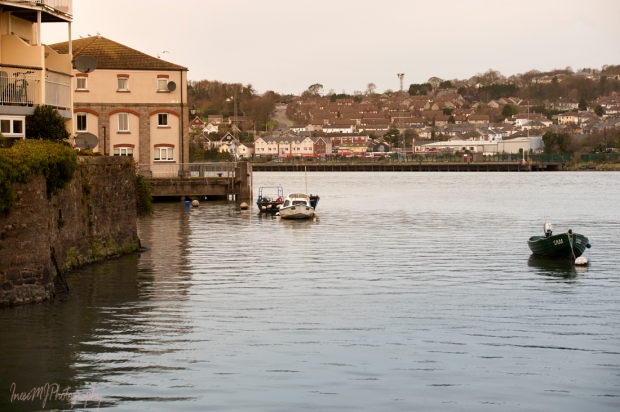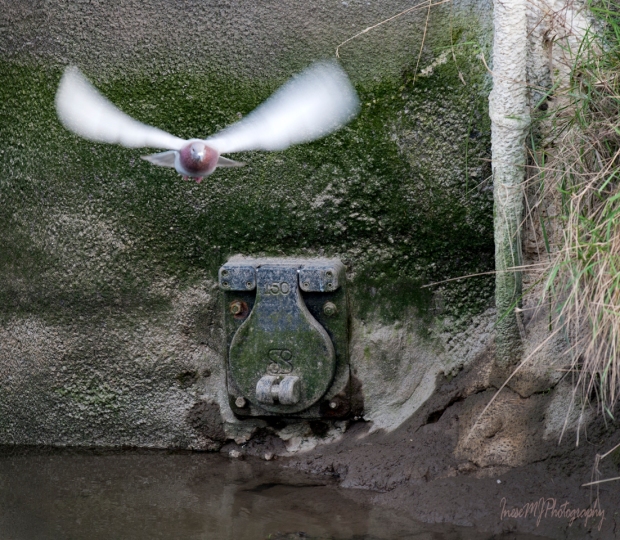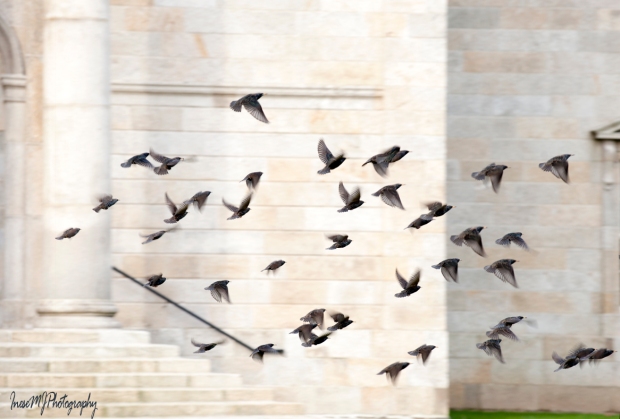We are walking along the St. John’s River out of town, into the reed wetland. All the pictures for these blogs were taken in late autumn and winter when the reeds are golden and the trees are bare. No butterflies and wildflowers, but some bird species arrive from as far as Russia.
Alder cones are a source of food for many bird species, including this female Lesser redpoll.
Goldcrest is a busy bird with a high-pitched thin call and an acrobatic manner of foraging. Weighing only 5 gm, Goldcrest is Ireland’s, and also Europe’s, smallest bird.
Most of my pictures are about the walkway, but let’s see what is going on in the river itself.
There is a Cormorant supervising this stretch of the river. He perches on a tall pole waiting until the water is deep enough for his liking. If you are lucky, you can see him land on the surface and dive.
The cormorant swims on the water between dives, and after he is done fishing, he runs on the surface flapping his wings and making terrible noise that can be heard from a distance.
Then he returns to his pole.
Common chiffchaff is another visitor who shows up in March to stay over summer.
In the picture below, Friends of St. John’s River on their weekend rubbish pick mission. From what I observe, the housing estate across the river is the main source of chemical pollution. When somebody is doing laundry, all the detergent-polluted water is going straight into the river. I have seen a rat frantically trying to swim away from the milk-white stream spreading from a pipe. Littering is another problem. People walk home from the supermarket across the road munching on a bun or crisps, and while crossing the pedestrian bridge simple drop the empty plastic or paper bag in the water. Sometimes this is where a used shopping trolley goes too. Even in this remote area of the river I have seen many kinds of litter. Obviously, St. John’s river doesn’t have enough friends, which is sad.
A group of birch trees provides the last canopy of green over the walkway.

On the other side of the river stretches a sea of reed sprinkled with the islands of willow trees bursting with bird songs – Kilbarry Bog. I am glad it hadn’t been drained in the 19th century when St. John’s river was straightened in order to make a canal that would reach the seaside resort of Tramore. Now the wetland is a protected natural ecosystem. In these blog posts I shared photographs of many bird species, but there could be more. The reed swamp is an important summer home for Reed warbler. I don’t have pictures of Reed warblers – something to look forward.
A wide strip of reed separates us from the busy Tramore road and continues on the other side. Here we can see an occasional Blue tit and Wren.
There is always a wren somewhere 🙂
The old railway left the wetland and crossed over the Tramore road at the Black Rock. Here is another video – a piece of first-hand history.
Black Rock, the end of the river walkway.
However, we can turn to the left and walk along the Tramore road to the Ballindud Roundabout – we will, in a minute 🙂
According to Google Maps, the source of St. John’s River is somewhere there in the reeds…
I don’t always trust Google Maps. We keep walking in the direction of the roundabout. The river, hidden in the reeds, flows through the bog parallel to our path. Suddenly it makes a 90º curve so that we can see it again, and then disappears beneath the road! The tiny stream that emerges on the other side doesn’t have a name… It meets with other unnamed streams… I guess we won’t be able to identify the source, but we have found the place from where the unnamed stream becomes the St. John’s River 🙂
Thank you for loving our river! After the long and eventful walk I want to share a beautiful song for all those who love and respect nature, for all the Friends of the rivers and oceans, mountains and meadows, deserts and rain forests of the world.
Robert Burns and Rioghnach Connolly – Now Westlin Winds 🙂
https://inesemjphotography.com/2019/04/06/st-johns-river-confluence/
https://inesemjphotography.com/2019/04/20/st-johns-river-sneaking-through-town/
https://inesemjphotography.com/2019/05/04/st-johns-river-straightening/
https://inesemjphotography.com/2019/05/18/st-johns-river-cherrymount/
 Have a wonderful weekend!
Have a wonderful weekend!





























































 Have a wonderful weekend!
Have a wonderful weekend!




















































































